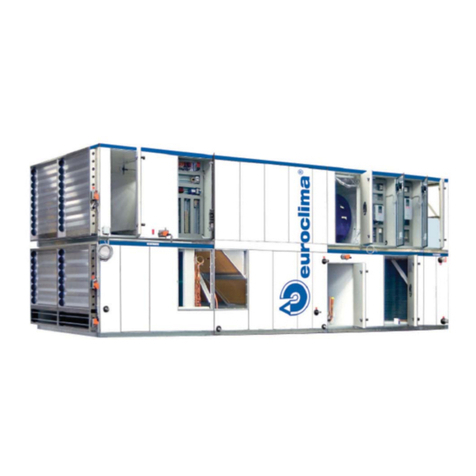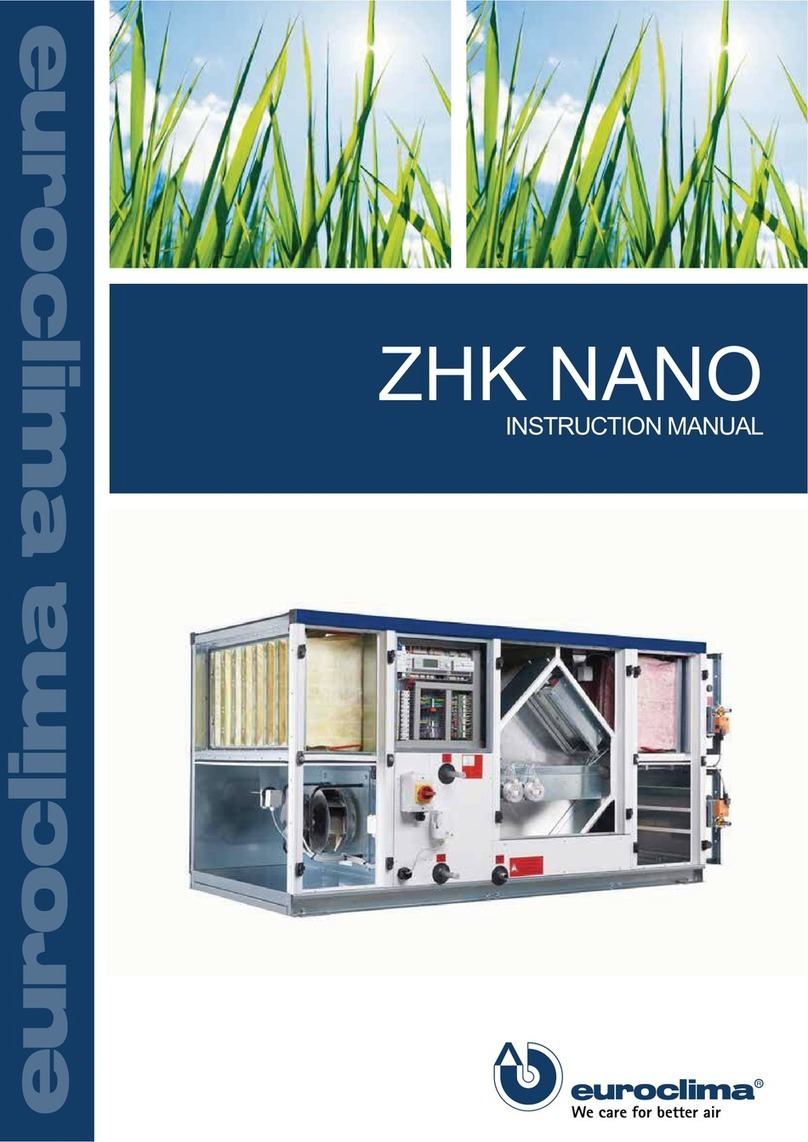
V07-19.0 3/129
5.4.2 Panel filter and / or bag filters in filter frame ......................................................................55
5.4.3 Laterally removable bag filters with clamping mechanism ................................................56
5.4.4 HEPA filters........................................................................................................................57
5.4.5 Activated carbon filter ........................................................................................................58
5.5 Dampers with external gear wheels............................................................................... 59
5.6 Hygienic AHUs .............................................................................................................. 59
6Installation ............................................................................................................................ 60
6.1 Heat exchanger connection........................................................................................... 60
6.1.1 General notes ....................................................................................................................60
6.1.2 Steam heat exchanger.......................................................................................................62
6.1.3 Plate heat exchangers for refrigeration circuits .................................................................63
6.2 Humidifier, indirect adiabatic cooling ............................................................................. 64
6.2.1 Water quality ......................................................................................................................64
6.2.2 Protection of the drinking water against pollution ..............................................................64
6.2.3 Special indications for different humidification systems ....................................................65
Spray humidifier –Installation of the pump circuit .......................................................... 65
Evaporative humidifier .................................................................................................... 69
High pressure spray humidifier ....................................................................................... 69
Steam humidifier............................................................................................................. 69
6.2.4 Connection of indirect adiabatic cooling ............................................................................69
6.3 Drain for condensate and excess water......................................................................... 70
6.3.1 Standard siphons ...............................................................................................................70
6.3.2 Ball siphons........................................................................................................................71
6.4 Duct connection –airside connection to AHU................................................................ 73
6.4.1 Insulation of fresh air damper ............................................................................................76
6.5 Pumps........................................................................................................................... 76
6.6 Freeze protection measures .......................................................................................... 76
7Electrical connection............................................................................................................ 77
7.1 Connecting to an external protective conductor system................................................. 77
7.2 AC motors ..................................................................................................................... 77
7.3 EC motors ..................................................................................................................... 82
7.4 Main switch (emergency stop switch) ............................................................................ 82
7.5 Variable, frequency-controlled drives (VFD, frequency converters) ............................... 83
7.6 Electric heaters.............................................................................................................. 83
7.6.1 AHUs equipped from EUROCLIMA with control................................................................84
7.6.2 AHUs which are not equipped from EUROCLIMA with control .........................................86
7.7 Differential pressure restriction for plate heat exchangers ............................................. 86
7.7.1 General indications ............................................................................................................86
7.7.2 Prevention measures .........................................................................................................87
7.7.3 Pressure monitoring with differential pressure switch .......................................................87
7.8 Frost protection for plate heat exchanger ...................................................................... 89
7.9 Lighting.......................................................................................................................... 89
7.10 UV section..................................................................................................................... 90
8Commissioning..................................................................................................................... 90
8.1 Preliminary steps........................................................................................................... 90
8.1.1 Variable frequency controlled drives (frequency converter) - parameters.........................91
8.1.2 Airflow measurement by differential pressure measurement at the fan ............................93
8.1.3 Heat exchanger..................................................................................................................94
8.1.4 Electric heater ....................................................................................................................95
8.1.5 Air filters .............................................................................................................................95
8.1.6 Humidifier / Air washer.......................................................................................................95
General indications......................................................................................................... 95
Spray humidifier.............................................................................................................. 96
Evaporative humidifier .................................................................................................... 96
High pressure spray humidifier ....................................................................................... 96
Steam Humidifier ............................................................................................................ 96
8.2 Refrigeration circuit........................................................................................................ 97
8.2.1 General notes ....................................................................................................................97





























